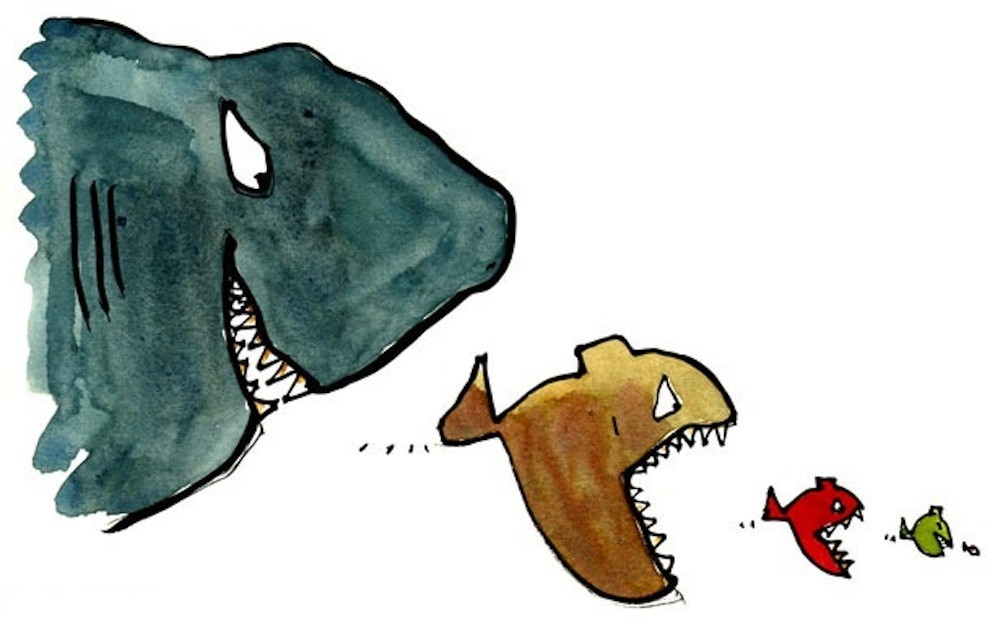 As discussed last time, everyone (and M&A people in particular) should be a lot more concerned with cash flow than accounting profits. Not to sound like a broken record, but it really is all about cash – the size, surety, and growth of those cash flows is what you’re buying as an acquirer. And the ability to trace those cash flows through the financial statements is a critical skill in M&A, particularly as it pertains to projections and valuation matters. A piece of advice when on the corp dev buyside: You’d better understand very well i) the origins of your target’s cash flow and ii) how it is reflected in their financials.
As discussed last time, everyone (and M&A people in particular) should be a lot more concerned with cash flow than accounting profits. Not to sound like a broken record, but it really is all about cash – the size, surety, and growth of those cash flows is what you’re buying as an acquirer. And the ability to trace those cash flows through the financial statements is a critical skill in M&A, particularly as it pertains to projections and valuation matters. A piece of advice when on the corp dev buyside: You’d better understand very well i) the origins of your target’s cash flow and ii) how it is reflected in their financials.
So let’s take a look at a couple basic business activities and their related cash flow effects. You may find it enlightening…
First, a pretty simple one: What is the cash effect of increasing the depreciation of an asset by $100 and how does it flow through the financials?
- On the income statement, if Depreciation is UP, Operating Income is DOWN by $100, therefore Net Income is DOWN by $60 (assuming 40% tax rate)
- On the cash flow statement there are two effects – Net Income is DOWN by $60 and Depreciation is UP by $100, so the net effect (all else held constant) is that Total Cash is UP by $40;
- On the balance sheet, Cash goes UP by $40, and Net Fixed Assets goes DOWN by $100. Total Assets, then, are DOWN by $60. On other side of the balance sheet, Retained Earnings is down by $60 via lower Net Income (as previously shown in #1), so the balance sheet balances.
Next, a slightly harder one: What is the cash effect of increasing Inventory by $100 (by paying cash), and how does it flow through the financials?
- On the income statement, if Inventory is UP by $100 there is NO EFFECT. Recall that Inventory is only reflected on the income statement when it is sold (as Cost of Goods Sold).
- On the cash flow statement, Cash from Operations reflects a $100 USE of cash to buy the Inventory, so total cash flow (all else held constant) is DOWN by $100;
- On the balance sheet, there is no net effect – Cash has gone DOWN by $100 and Inventory has gone UP by $100.
Last, a slight curve ball: What is the cash effect of increasing Deferred Income Tax by $100, and how does it flow through the financials?
- Recall that Deferred Income Tax is a difference between book and cash tax obligations.
- On the income statement, if Deferred Income Tax is UP by $100, there is NO EFFECT. The income statement only reflects a “standard”, assumed tax rate.
- On the cash flow statement, Deferred Income Tax is reflected as a non-cash add-back and increases cash UP by $100. On a net basis, total cash flow therefore goes UP (all else held constant) by $100;
- On the balance sheet, Cash goes UP by $100 and the related liability for Deferred Income tax also goes UP by $100, balancing the balance sheet.
Confused (or enlightened) yet? The point here is that every business activity and event should be examined for a cash consequence. Pick any line item in the financials and trace its link to the cash account. Ignore or misunderstand this relationship at your peril, because in corporate M&A what you’re really buying (apart from strategic considerations) is cash flow. Period.
Next time I’ll discuss some basics of financial modeling and projections.
Posted by: Mory Watkins
